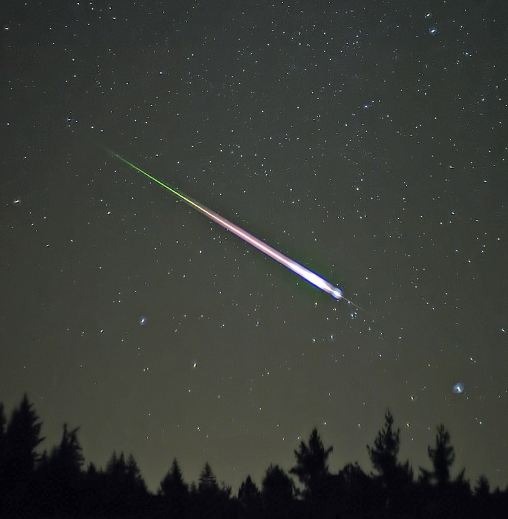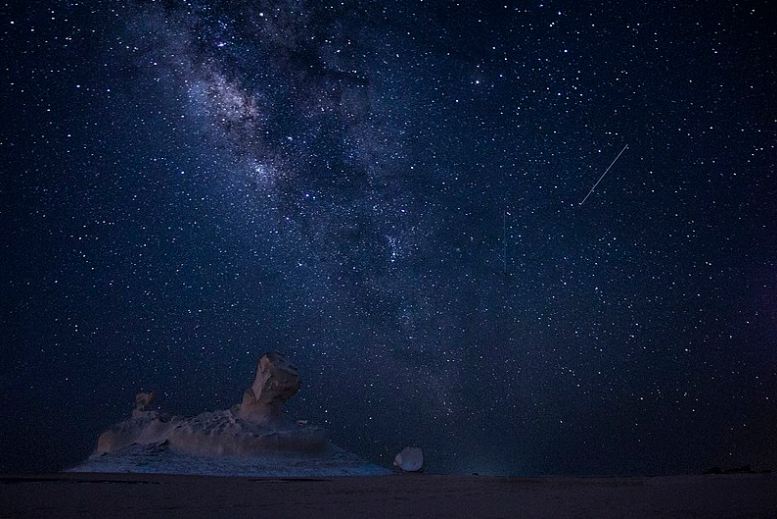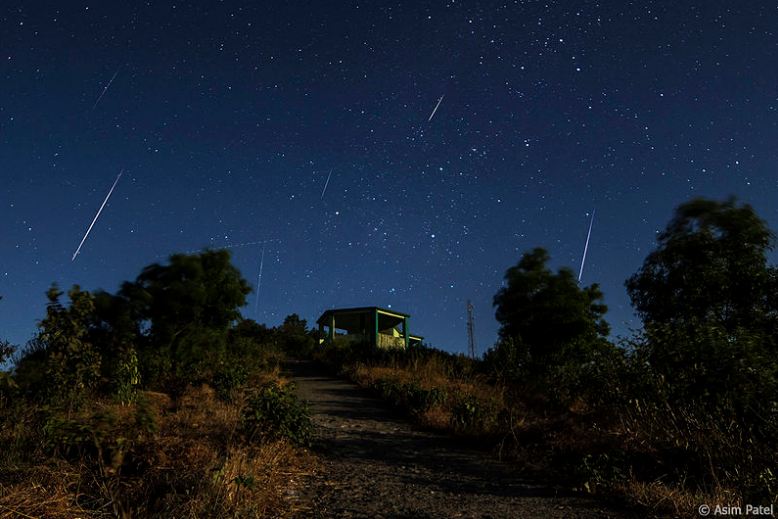If you are looking up at the night sky you might by chance see some bright “stars” falling from the sky and get excited. But what is it exactly?
What is a Meteor?
A shooting star is perhaps the most common and familiar term for a meteor, meteorite, or meteoroid. But what really is a meteor? A meteor that appears as a streak of light in the sky that’s why it’s called a shooting star or a falling star, but it is a space rock that is crashing through Earth’s atmosphere.
On the other hand, a meteoroid is a lump of iron and rocks from space orbit the Sun. It comes in different sizes depending on its composition, and most of them are small fragments of rock created by asteroid collisions. Comets also create meteoroids as they orbit the Sun and shed dust and debris.
When a meteoroid reaches the Earth’s atmosphere at high speed, it burns up because of the air’s intense friction. When it glows and fires up, we see them as shooting stars or call meteors. But when they survive as they enter the atmosphere and hits the ground, they are called a meteorite. Most meteors occur in the mesosphere, about 50-80 kilometers above the Earth’s surface.
What is a METEOR SHOWER?
Several meteors shed off life in an hour, but only a few are visible to the naked eyes. But there are times when they appear like fireworks in the clear night sky. When we can see these falling or dying meteors, then we see meteor showers. All the meteors in a shower seem to come from one spot in the sky. That is called the radiant point or “the radiant.”
Meteor shower’s name is from the constellation to where its radiant appears. Constellation itself is not the meteors’ source but rather the comet from which they have broken off. For instance, Leonid meteor showers seem to produce meteors from the constellation Leo, but it’s the Comet Tempel-Tuttle debris.
FAMOUS METEOR SHOWERS
Leonids
The Leonids showcase its magnificence during November. This shower is considered one with some of the fastest and longest-lasting meteors. Other significant meteor showers include the Perseids, with its peak in August. Its meteor is a tiny piece of the comet Swift-Tuttle that swings by the Sun every 135 years. In 1833, 1866, 1966, 1999, and 2001, Leonids had produced meteors. It is best to witness these meteor outbursts when the parent object, comet 55P/Tempel-Tuttle, is near perihelion.
They are not fresh materials but rather a debris from the comet’s earlier returns. Based on studies, the next dense clouds of debris will occur on that Earth in 2099. Therefore, there will be no meteor showers when the comet returns in 2031 and 2064. However, we can witness several good displays of Leonid activity with our binoculars or telescopes when rates are more than 100 per hour.
Orionids
Meanwhile, the Orionids meteor shower is another significant event in the sky to be witnessed. It is comprised of a medium-strength shower that sometimes reaches high strength activity. It produces 10-20 shower members at maximum in its average years, but during its peak, such as 2006-2009, it makes about 50-75 showers per hour.
Perseids
The Perseids shower never reaches storm levels like producing thousands of meteors per hour, but at its best, it can make an outburst that comes between 80-100 meteors per hour to a few hundred per hour. In 1993, its peak happened, reaching 300 meteors per hour, one of its best performances.
Geminids
Additionally, the Geminids are also important meteors that are predictable each year. Particularly, meteor showers enthusiasts await and mark Dec 13 and 14 to be the day to watch the spectacular shower of Geminids. The shower provides good activity before midnight because the Gemini constellation is well placed from 22:00 onward. The meteors are often bright and intensely colored, and their medium-slow velocity causes persistent trains not to be seen. It is best to watch this meteor in the southern hemisphere during the middle of the night and at a reduced rate.
Top of Form
Top of Form
Top of Form
Top of Form
Bottom of Form
Bottom of Form
Bottom of Form
Bottom of Form
Eta Aquarids
The first of the year’s two Halley’s Comet showers occur from April 19 to May 28, with a peak (10 to 20 per hour) around May 6. The finest place to watch this shower is in the Southern Hemisphere when the hourly rate reaches around 50. The radiant is called after one of the stars in the Y-shaped asterism in Aquarius. In 1870, the shower was discovered, and in 1876, it was attributed to Halley. The meteors are among the quickest (42 miles [67 kilometers] per second) and are light on average, but the brighter ones have a yellowish hue; approximately 30% of them leave trains.
Lyrids
The Lyrids emerge from April 16 to 25, peaking around April 21 (around 10 to 15 per hour); the radiant is between Hercules and Lyra. The Lyrids are the earliest recorded meteor shower, with Chinese observations dating back to 687 B.C. In 1839, astronomers identified the Lyrids as an annual shower, and in 1867, they linked it to its parent comet, C1861 G1. Lyrid meteors are bright and rapid (30 miles [48 kilometers] per second), with roughly 15% leaving persistent trains.
Southern Taurids
This is the brightest of three streams from Comet Encke, visible between October 1 and November 25. A broad maximum occurs between November 3 and 5; however, this shower typically produces less than 15 meteors per hour. The shower was first noticed in 1869, and in 1940, it was linked to Comet Encke. Because it approaches Earth from behind and must catch up, its meteors are typically faint and slow (19 miles [30 km] per second). If you find this post interesting, we recommend you also read our article about Where Do Old Satellites Go When They Die.







